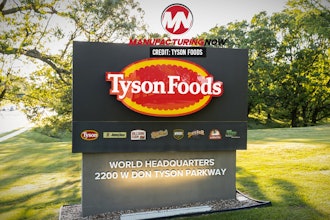We live in a world where we have unprecedented access to a wide variety of data — and food and beverage plants are no exception. Owners increasingly want to know what’s going on in their facilities from water and electricity consumption to other processing and mechanical data.
Building management systems can monitor and control various elements throughout a building, such as:
- HVAC systems
- Lighting
- Plumbing
- Processing equipment
- Security systems
While these systems are utilized in various commercial buildings, they’re especially important in food manufacturing facilities, which use a significant amount of energy and water in their processing.
Many of Stellar’s clients use technology to monitor mechanical systems such as their refrigeration units, but what about the processing side? What if you could understand exactly how much certain products were costing you to produce? What if you could easily identify discrepancies and inefficiencies in your processing by tracking already available data and analyzing those patterns?
3 Levels Of Monitoring Food Plant Utility Usage
When it comes to monitoring utility usage in a food and beverage facility, there are three basic levels of granularity:
1. Building overall — These systems are the most basic and measure the input and output of the entire facility. This can give you a high-level understanding of your facility’s consumption and overall trends.
2. Panel level — By monitoring usage at the panel level, you could have a greater understanding of how different groups of processing lines are behaving, independent of the rest of your building’s infrastructure.
3. Line-by-line — Installing sensors on each individual processing line gives you information at a granular level. This could allow you to track the amount of electricity or water needed to produce a particular SKU and make refinements accordingly.
Depending on your needs and resources, investing in some sort of monitoring system can help you make more informed decisions, especially the more granular you get.
What Are The Benefits Of A Building Management System In A Food Plant?
Often times, data monitoring systems can be one of the first things clients cut when the budget gets tight for their new-build or renovation. After all, this technology is comprised of electronic sensors and specialized software, so it isn’t necessarily cheap. However, many times the long-term value can outweigh the upfront cost for food processors.
Benefits of installing a building management system include:
- Cost savings — Perhaps the obvious benefit, tracking and streamlining your electrical and water usage can help your bottom line by reducing your utility bills. Rather than “flying blind,” understanding your usage and making refinements can pay off significantly in the long run.
- Sustainability — Discovering how to reduce your facility’s consumption is not only better for the environment, but it can help you achieve or maintain LEED certification.
- Smarter growth — Having data from your process lines can help you accurately determine future projections when planning for an expansion or a new facility altogether. Plus, knowing the data behind your processing can help you plan future usage and negotiate favorable utility rates.
- Maintenance — Tracking data and monitoring trends can help you recognize when a system or equipment requires maintenance or replacement before it impacts your production. Proactive maintenance is always better than reactive maintenance, which often includes costly downtime.
Of course, you may not know what other benefits you could derive from your data until you collect it and analyze it. There may be other patterns present or revelations about your processing that you wouldn’t otherwise realize. Such is the nature of today’s data revolution, regardless of your industry or application. Having all this data can be powerful for predictive analytics, which is the next chapter in modern-day food processing.
Wi-Fi Is Increasing Access For Older Facilities
Before the days of wireless internet, building management systems were a much bigger deal to install in an existing facility, since it involved running cables and wires between the sensors and the computer interface.
However, more plants today are equipped with Wi-Fi, meaning sensors can communicate wirelessly with the software. This makes it much easier (and cheaper) to retrofit an older facility with a building management system, since it doesn’t require upgrading infrastructure and installing extensive wiring. Therefore, we’re seeing these systems become more prevalent in both greenfield and renovation projects alike.
About Stellar
Stellar is a fully integrated firm focused on planning, design, pre-construction, construction, refrigeration, mechanical & utility, building envelope, and total operations & maintenance services worldwide. Visit the company's blog at www.stellarfoodforthought.net or learn about its projects at stellar.net.






















